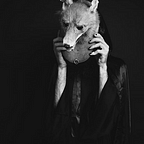‘THOUGHT ITSELF IS A MONSTER’
Originally published in the Studio Scum Volume 1 zine (STUDIO SCUM, 2019)
Gilles Deleuze was born in 1925, married translator Denise Paul Grandlouan at age 31, and jumped out of a window in 1995. Often seen as difficult, or even downright impossible, to read, Gilles Deleuze’s work is to be experienced: its obscurity is part of its purpose. Deleuze turns philosophy into a creative act, akin to art or science. Where science creates explanations for why the world took one path over another, philosophy instead creates concepts that engage with and elaborate the many possibilities inherent in the world. Concepts are not ideas or thoughts, but tools and weapons to be used in changing life.
Deleuze focuses on multiplicity — objects are always and already multiple, they are combinations of lines and speeds existing in time, always in a process of becoming something else, not just “things” in static space. The first line of A Thousand Plateaus, written with Félix Guattari, captures this: ‘Since each of us was several, there was already quite a crowd’. To say that A Thousand Plateaus was written by “two people” ignores that each author was already multiple people.
Deleuze and Guattari implore us to make maps, not tracings. Maps are made by interacting with the world, and highlight points of entry and escape, they can be scribbled on, redrawn, torn up, they are a type of performance. Tracings, however, attempt to make a constantly changing world appear stable and static, they claim to be reality and neutralise the world by reducing it to arbitrary universal laws. By mapping, we can finally break from thought modelled on hierarchies and the State, and find entirely new ways to think.
